This is one of Guangxi’s specialties: steamed pork belly. We Chinese eat a lot of pork. In fact, half the pork raised in the world is consumed in China. In China, we raise pigs in modern buildings as high as seven stories, holding 1,000 pigs per floor. Today we will learn how to make Kou Rou, Guangxi-style.
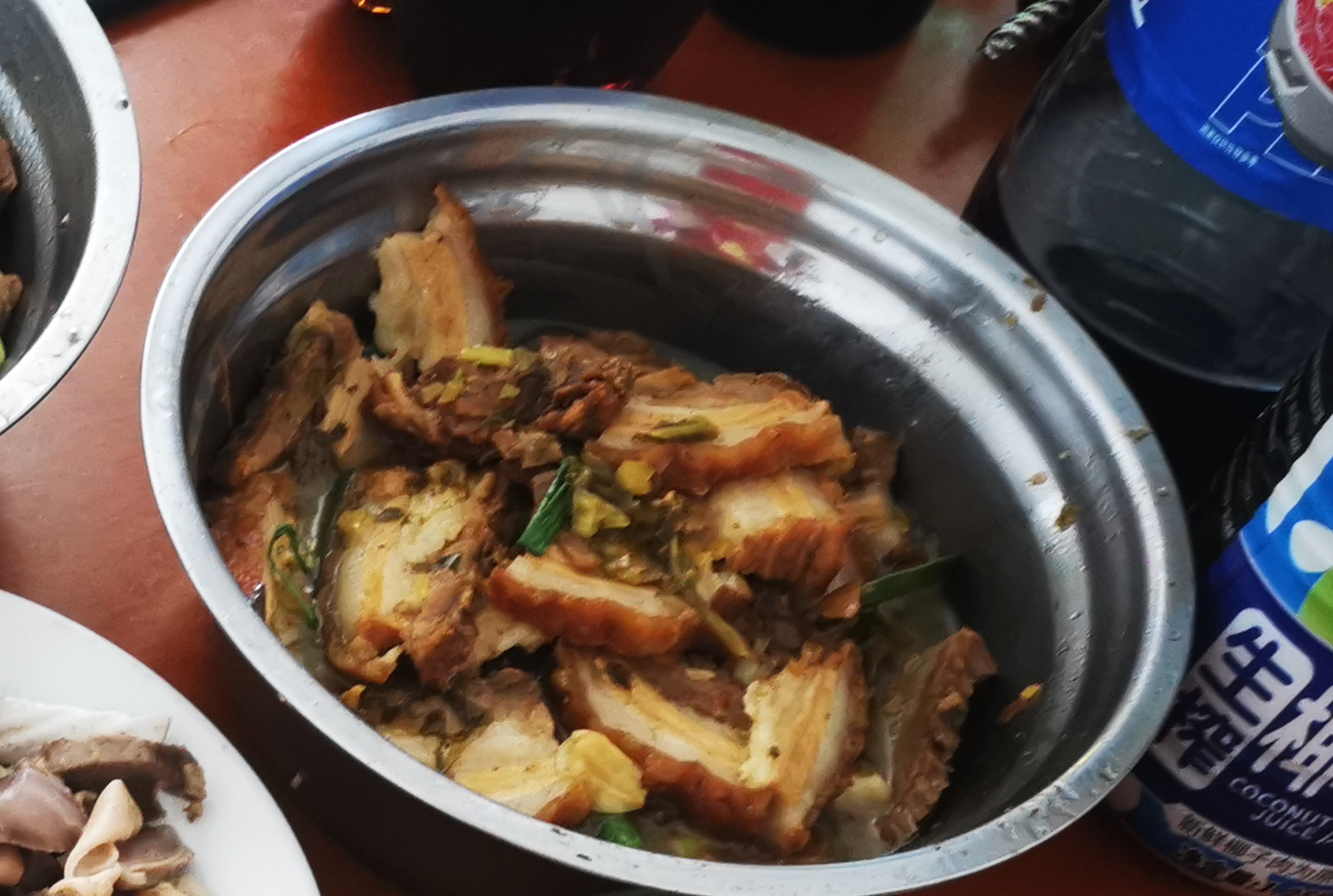
Kou Rou
Guangxi-style steamed pork is a local variety of Kou Rou, the more famous version being Mei Cai Kou Rou, which is a famous Hakka dish. As with all Chinese cuisines there are regional variations. Here is the method my sister and I use, when preparing our Reunion Dinner.
The pork is cooked twice, first poached in water with wine, star anise, and scallions, then deep-fried. The pork in the picture is the second cooking, in fact, the first cooking is a big production. My sister likes to poach the pork, then deep-fry it, coated with dark soy sauce. Typically, she freezes it and saves it for a meal. She will stir-fry it with garlic leaves, as shown here, but it can also be steamed with makes it very tender.
So let us learn how to make Guangxi Steamed Pork (Kou Rou)!
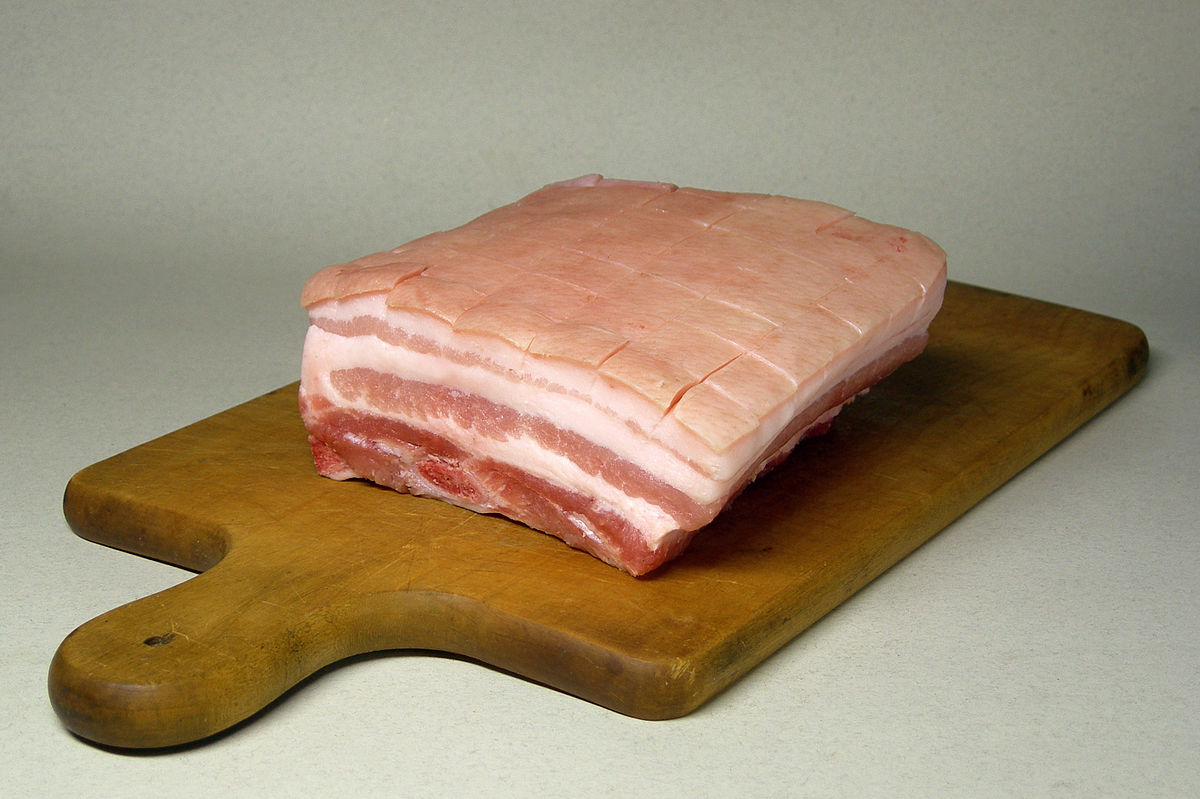
Kou Rou in the US

Americans eat over 18 pounds of bacon per person each year. Bacon is nothing more than “cured” pork belly cut into strips. The only difference between American bacon and the fresh pork belly used for Guangxi-style Kou Rou or Steamed Pork is that bacon is first cured using sodium nitrite, which is toxic. I have lived in several parts of the US. Not all groceries carry pork belly, but I have found half-cut pork belly in Texas grocery stores. It does not have the full five-layer thickness of a full cut, but it works very well for Kou Rou. Typically, I find it in 5 to 5.5 lb slabs. I cut the slab in half, then cut the halves into four parts, each weighing 12 to 16 ounces each. I save half of the package for making Jing’s Fried Pork Belly with Chili, which is a very popular dish with my friends–there are seldom any leftovers. Pork belly is also good for Chinese Fried Noodles, Fried Rice, and Jing’s Fujian Salty Rice. Of course, the Kou Rou also works well in these dishes, and sometimes I use it instead of the plain pork belly for a tasty alternative.
Guangxi Steamed Pork (Kou Rou 扣肉)
Equipment
- 1 Dutch oven (for deep frying)
- 1 large saucepan (for simmering)
Ingredients
- 1 pound pork belly skin on
- 3 scallions (white part)
- 3 slices fresh ginger
- 2 star anise
- 2 tbsp Shaoxing wine
- water (enough to cover the pork when simmering)
- peanut oil, soybean oil, canola oil, vegetable oil, or lard (enough to cover the pork when deep-frying)
- dark soy sauce
- salt (to taste)
Instructions
- The first step is to buy a perfect piece of pork, pork belly is the best. Be sure the skin is attached, and to check the skin for any remaining bristles (hair).
- Cut the pork belly into pieces, what kind of lumps? If it were me, it would be the area of my two palms. If you have a big palm, then cut into the shape you like, but not too small.1 pound pork belly, salt (to taste)
- Let us bring a pot of water deep enough to cover the meat to a boil. Then, add cooking wine, green onions, ginger, and star anise.3 scallions (white part), 3 slices fresh ginger, 2 star anise, water, 2 tbsp Shaoxing wine
- Simmer the meat until it is cooked. To judge whether a large piece of meat is cooked, you can use chopsticks to pierce its skin. If you can insert it easily, then you have got a large piece of cooked meat.
- After it is cooked, remove it and let it stand for 3-5 minutes, then smear the soy sauce on the skin. Then use absorbent paper to absorb excess water from the whole meat.dark soy sauce
- Next, we need to use a deep wok for frying. Add oil to the pan. Use sufficient oil to cover the meat. The temperature of the oil is very important. We can try to put the end of a chopstick into the oil pan. If you see some small bubbles around the chopsticks, this is the right temperature.peanut oil, soybean oil, canola oil, vegetable oil, or lard
- Then, we gently put the meat into the hot oil. Note that the hot oil is likely to splash out at this step, so we need to cover the pot immediately. In addition, we need to turn the meat in the process. Turn it over properly and let it deep-fried evenly.
- When the meat turns golden brown, remove it from the oil and put it in a clean container. So we got a golden pork! Oh, just kidding, it’s: Guangxi-style steamed pork!
Notes
- You can freeze the deep-fried pork to store until needed.
- Add more star anise if you like a bit more flavor. Star anise has a licorice-like taste, but it is very subtle when simmered in the water.
- Use only enough water and oil to just cover the meat.
- Deep-frying does not take long. You do not want a hard crust on the meat, just a nice red-brown finish.
Serving
- The Kou Rou can be sliced and eaten, or sliced and lightly browned for use in other recipes. It can also be steamed. Kou Rou is delicious when steamed and served over white rice with a little dark soy sauce for flavor.
Nutrition
Storing Kou Rou
The deep-fried pork can be stored for a long time in the freezer. When we are preparing for the reunion dinner, we take it out of the refrigerator, thaw it, cut it into thin pieces, and then stir-fry it with garlic leaves and basic seasonings. It’s very simple. You can also steam it when preparing it for the table, which makes it very tender.
Do you enjoy My Chinese Home Kitchen?
We enjoy sharing these authentic home recipes with you. To learn more about My Chinese Home Kitchen, please visit our About page.
Please leave a comment, or SUBSCRIBE to our newsletter.
For more of our original videos, visit My Chinese Home Kitchen on YouTube and Rumble.


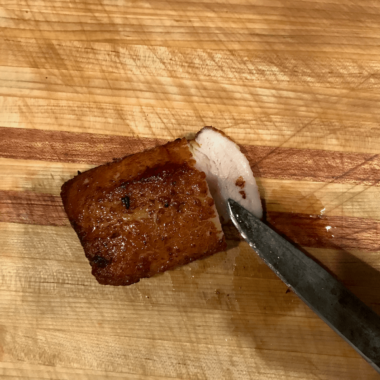
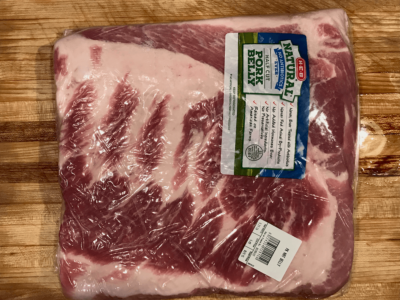
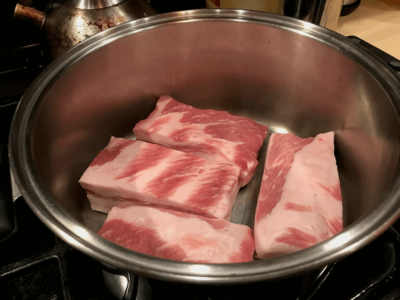


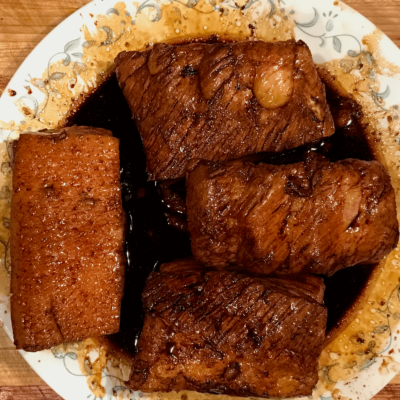

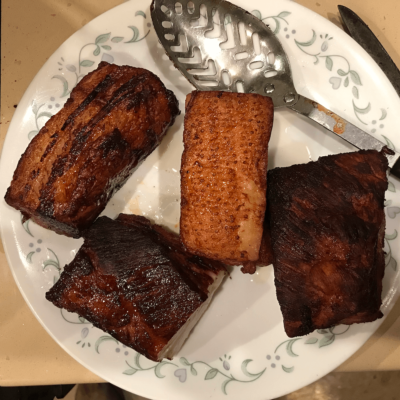


i Love Pork Belly cooked anyway it is cooked,
Bob Bloss.